What is the best aluminum profile for windows and door ?
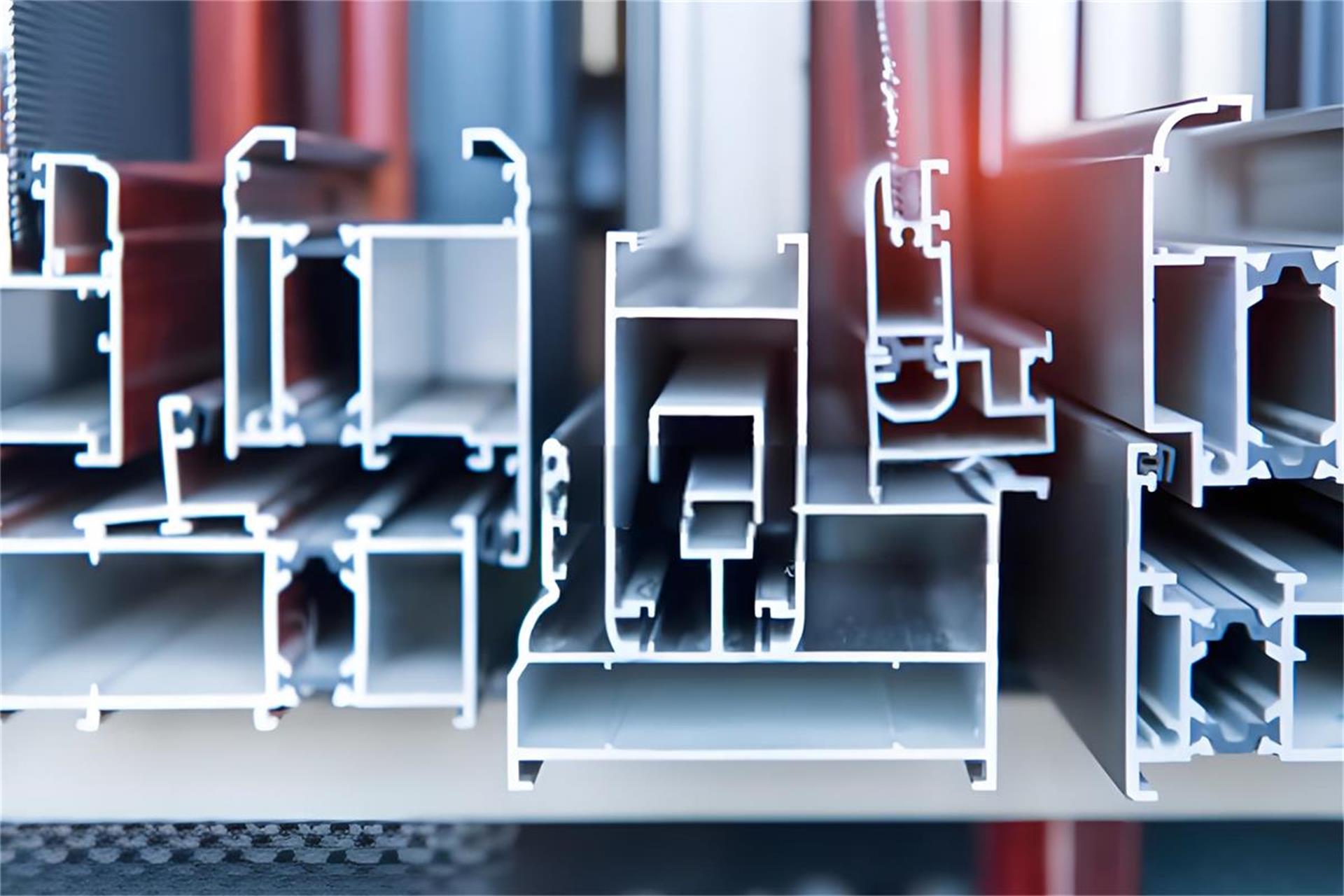
I. Introduction
1.1 The prevalence of aluminum alloy doors and windows
Aluminum alloy doors and windows have become ubiquitous in modern architecture. They can be found in residential houses, commercial buildings, and industrial facilities. Their sleek appearance, durability, and functionality make them a popular choice among architects, builders, and homeowners alike. In residential settings, they provide a stylish and practical solution for windows and exterior doors, allowing natural light to flood in while maintaining security and insulation. In commercial and industrial applications, they are often used in facades, storefronts, and office partitions due to their strength and ability to withstand heavy use.
1.2 The importance of understanding aluminum alloy doors and windows
Understanding the characteristics and features of aluminum alloy doors and windows is crucial for several reasons. Firstly, it enables consumers to make informed decisions when selecting products for their homes or buildings. Knowledge about different types, materials, and manufacturing processes helps in choosing the most suitable option based on specific requirements such as climate, architectural style, and budget. Secondly, proper understanding facilitates better maintenance and care, ensuring the longevity and optimal performance of the doors and windows over time. This, in turn, can save on costly repairs and replacements.
1.3 Company introduction: Aluinno
Aluinno is a leading player in the aluminum alloy door and window industry. With years of experience and a commitment to innovation and quality, Aluinno has established itself as a reliable source for high-quality products. The company utilizes advanced manufacturing technologies and strict quality control measures to produce aluminum alloy doors and windows that meet the highest standards. Aluinno's range of products offers a diverse selection of styles, finishes, and performance features, catering to the varying needs of customers in different markets and applications.
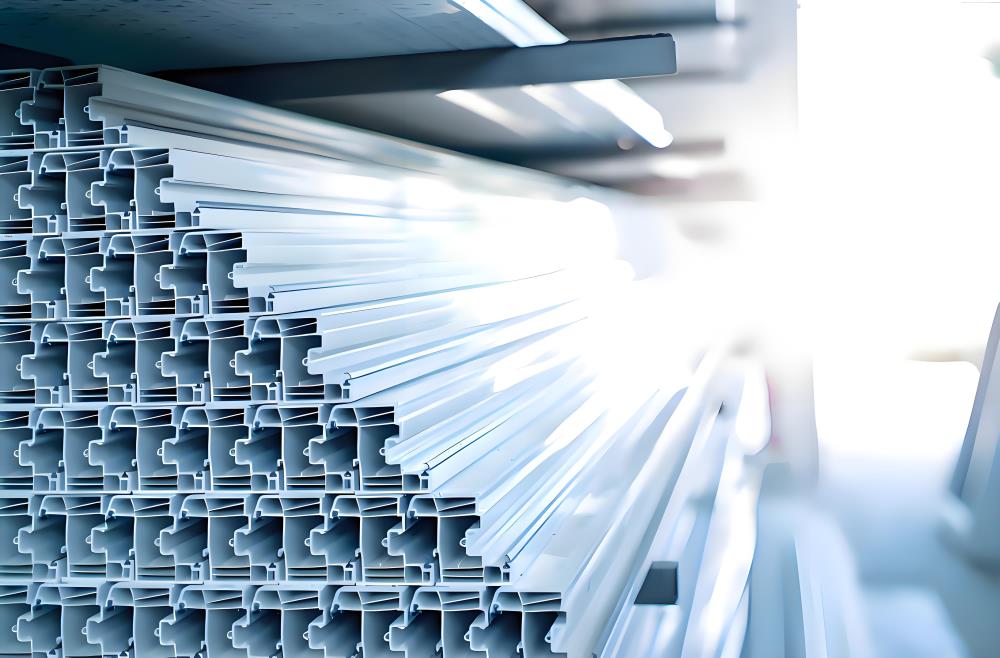
II. The Basics of Aluminum Alloy
2.1 Composition of aluminum alloy
Aluminum alloy is composed of aluminum as the base metal, along with other elements such as magnesium, silicon, copper, and zinc. These alloying elements are added in specific proportions to enhance the properties of the aluminum. For example, magnesium improves the strength and hardness of the alloy, while silicon enhances its casting ability and heat resistance. Copper can increase the strength and corrosion resistance, and zinc contributes to better dimensional stability and surface finish.
| Comparison of Aluminum Alloy Profile Series and Their Characteristics | |||
| Series | Alloy Composition | Characteristics | Typical Applications |
| 1xxx | Pure Aluminum (≥99%) | Good electrical conductivity, high corrosion resistance, low strength | Electrical wires and cables, chemical containers, decorative items |
| 2xxx | Al-Cu Alloy | High strength, moderate corrosion resistance | Aerospace structural components, wheel rims, propellers |
| 3xxx | Al-Mn Alloy | Good corrosion resistance, excellent weldability | Cookware, sheet metal parts, beverage cans |
| 5xxx | Al-Mg Alloy | Medium strength, excellent seawater corrosion resistance | Marine structures, shipbuilding, pressure vessels |
| 6xxx | Al-Mg-Si Alloy | Good formability, weldability, and corrosion resistance | Architectural frames, automotive parts, furniture |
2.2 Properties of aluminum alloy
Aluminum alloy possesses several remarkable properties. It is highly corrosion-resistant, thanks to the formation of a thin oxide layer on its surface that protects it from environmental factors such as moisture and oxidation. It is also lightweight, which makes it easier to handle and install compared to heavier materials like steel. Despite its light weight, it exhibits good strength, allowing it to support the structural requirements of doors and windows. Additionally, it has excellent thermal and electrical conductivity, although these properties are often less relevant in the context of doors and windows.
2.3 Comparison with other materials
When compared to steel, aluminum alloy is lighter and more corrosion-resistant, although steel may have higher strength in some cases. Wood, on the other hand, offers a natural and warm aesthetic but requires more maintenance and is susceptible to rot and insect damage. Plastic materials are lightweight and inexpensive but may lack the durability and strength of aluminum alloy. Aluminum alloy strikes a balance between cost, durability, and performance, making it a preferred choice in many applications.
III. Types of Aluminum Alloy Doors and Windows
3.1 Windows
3.1.1 Casement windows
Casement windows are hinged on one side and open outward like a door. They provide excellent ventilation as they can be opened wide, allowing a large amount of fresh air to enter. They offer a tight seal when closed, enhancing energy efficiency and reducing drafts. These windows are suitable for rooms where maximum ventilation and an unobstructed view are desired, such as living rooms and bedrooms.
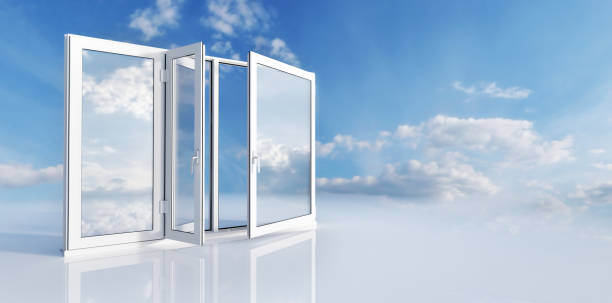
3.1.2 Sliding windows
Sliding windows operate by sliding horizontally along a track. They are space-efficient as they do not require additional space for opening outward or inward. They are easy to operate and are a good choice for areas with limited space, such as small apartments or rooms with obstructions outside. However, their sealing may not be as effective as casement windows, which can slightly affect energy efficiency.
3.1.3 Awning windows
Awning windows are hinged at the top and open outward from the bottom. They are ideal for providing ventilation even during light rain as the angled opening allows rain to run off. They are often used in combination with other window types or in areas where privacy and ventilation are needed, such as bathrooms or kitchens.
3.2 Doors
3.2.1 Hinged doors
Hinged doors are the most common type of doors. They are attached to a frame by hinges and swing open and closed. They offer a traditional and elegant look and can be made in various sizes and designs. They provide good security and privacy and are suitable for main entrances, interior room doors, and closets.
3.2.2 Sliding doors
Sliding doors move horizontally on a track and are great for saving space. They are often used in patio or balcony entrances, providing a seamless transition between indoor and outdoor spaces. They allow for large glass panels, offering an unobstructed view and good natural light penetration.
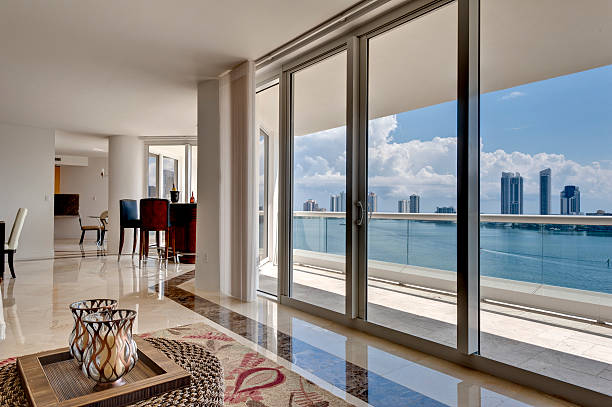
3.2.3 Folding doors
Folding doors consist of multiple panels that fold together when opened. They can create a wide opening, making them perfect for connecting large indoor and outdoor areas, such as in a living room opening onto a garden. They have a modern and stylish appearance and can enhance the overall aesthetic of a building.
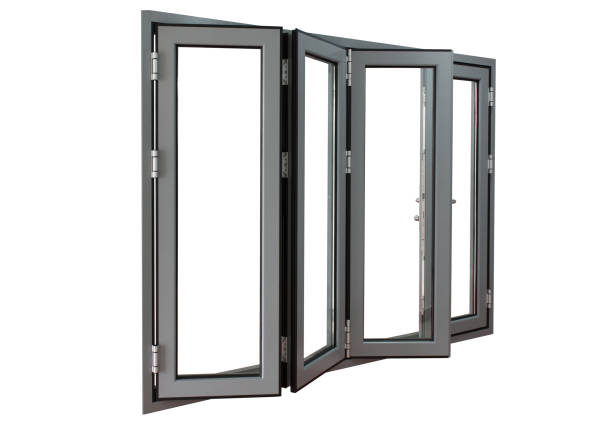
IV. The Manufacturing Process of Aluinno
| Common Surface Treatments for Aluminum Alloy Profiles | |||
| Treatment Type | Description | Advantages | Applications |
| Anodizing | Electrochemical process to form a protective oxide layer | Enhances corrosion resistance, provides a decorative finish, improves adhesion for paints and coatings | Architectural profiles, consumer electronics, automotive trim |
| Powder Coating | Application of dry, free-flowing powder that is then cured under heat to form a skin | Durable, resistant to chipping, scratching, fading, and wearing | Outdoor furniture, window frames, storefronts |
| Electrophoretic Painting | Electrophoretic deposition of paint particles onto the surface | Uniform coating thickness, excellent corrosion resistance, good adhesion | Automotive parts, sanitary ware, building materials |
| Wood Grain Transfer | Process of transferring a wood grain pattern onto the aluminum surface | Aesthetic appeal, provides the look of wood with the durability of aluminum | Doors, windows, decorative panels |
| Brushing | Mechanical process to create a linear texture on the surface | Enhances the appearance, provides a tactile feel, hides minor surface imperfections | |
4.1 Extrusion of aluminum profiles
The manufacturing process of Aluinno's aluminum alloy doors and windows begins with the extrusion of aluminum profiles. Aluminum billets are heated and forced through a die to create the desired shapes and cross-sections of the window and door frames. This process allows for precise shaping and customization according to specific design requirements.
4.2 Surface treatment
After extrusion, the aluminum profiles undergo surface treatment. Anodizing is a common process where the aluminum surface is oxidized to increase its hardness and corrosion resistance. It also provides a decorative finish. Powder coating is another option, which involves applying a dry powder to the surface and then curing it under heat. This results in a durable and colorful finish that can withstand harsh weather conditions.
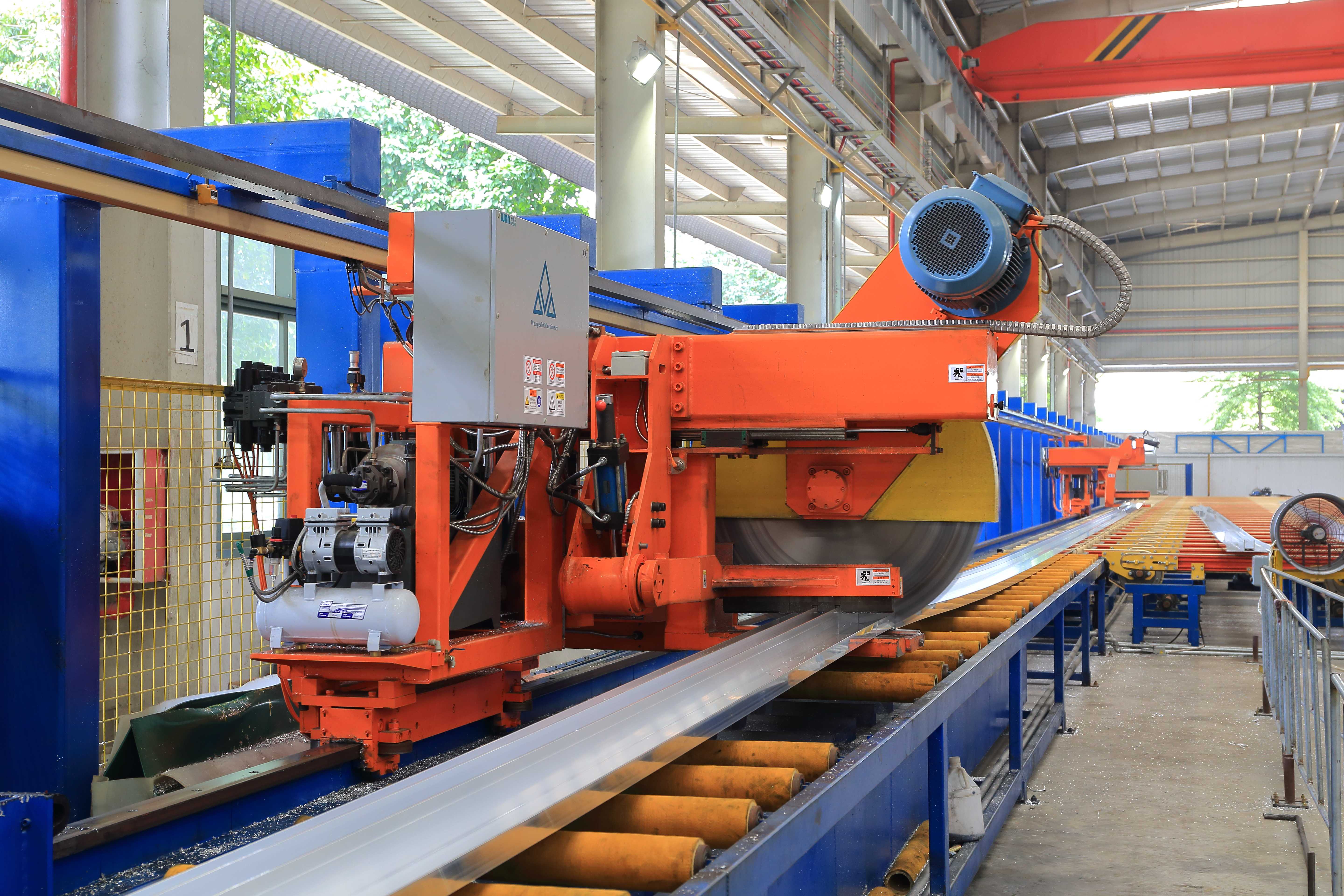
4.3 Machining and assembly
The extruded and surface-treated profiles are then machined to create holes, grooves, and other necessary features for the installation of hardware and glass. The various components are assembled with precision, ensuring proper fit and functionality. Aluinno employs skilled technicians and advanced assembly techniques to produce high-quality finished products.
4.4 Quality control
Aluinno has a strict quality control system in place. The raw materials are carefully inspected upon arrival to ensure they meet the required standards. During the manufacturing process, each stage is monitored, and finished products undergo comprehensive testing. Tests include checks for dimensional accuracy, strength, water tightness, and air tightness. Only products that pass all quality tests are packaged and shipped to customers.
V. Advantages of Aluminum Alloy Doors and Windows
5.1 Durability and longevity
Aluminum alloy doors and windows are highly durable. They can withstand extreme weather conditions such as strong winds, heavy rain, and snow without warping, cracking, or deteriorating. The corrosion-resistant properties ensure that they maintain their structural integrity and appearance for many years, making them a long-term investment.
5.2 Energy efficiency
Thanks to their good sealing properties and the ability to incorporate energy-efficient glass, aluminum alloy doors and windows can contribute to significant energy savings. They help to keep the indoor temperature stable by reducing heat transfer between the inside and outside of a building. This reduces the need for excessive heating or cooling, thereby lowering energy bills and environmental impact.
5.3 Low maintenance
Aluminum alloy requires minimal maintenance. Regular cleaning with mild soap and water is usually sufficient to keep them looking clean and new. Unlike wood, there is no need for painting or staining, and they are not prone to rotting or insect infestation. This makes them a convenient choice for busy homeowners and building managers.
5.4 Aesthetic appeal
Aluminum alloy doors and windows offer a wide range of aesthetic options. They can be produced in various colors, finishes, and styles to match different architectural designs. Whether it's a modern, minimalist building or a traditional, ornate structure, aluminum alloy products can be customized to enhance the overall look and feel.
5.5 Recyclability
Aluminum is a highly recyclable material. At the end of their life cycle, aluminum alloy doors and windows can be recycled and reused, reducing waste and conserving natural resources. This makes them an environmentally friendly choice compared to some non-recyclable materials.
VI. Selection Considerations
6.1 Climate and environment
In areas with high humidity or heavy rainfall, it is important to choose aluminum alloy doors and windows with good water resistance and drainage systems. In hot and sunny regions, products with effective heat insulation and UV protection are preferred. For cold climates, energy-efficient models that can prevent heat loss are essential.
6.2 Architectural style
The style of the aluminum alloy doors and windows should complement the overall architectural style of the building. For modern and contemporary designs, sleek and minimalist styles with large glass areas may be suitable. Traditional or historic buildings may require more ornate and detailed designs that mimic the characteristics of the era.
6.3 Security needs
When it comes to security, look for features such as strong locking mechanisms, reinforced frames, and impact-resistant glass. These elements can enhance the safety of the building and protect against break-ins and burglaries.
6.4 Budget constraints
Aluminum alloy doors and windows are available in a wide range of prices. It is possible to find options that fit different budget levels. While it may be tempting to choose the cheapest option, it is important to consider the quality and long-term value. Sometimes, investing a bit more upfront can result in better performance and durability in the long run.
VII. Installation and Maintenance
7.1 Professional installation
Proper installation is crucial for the optimal performance of aluminum alloy doors and windows. It is recommended to hire professional installers who have the experience and skills to ensure correct fitting, alignment, and sealing. Incorrect installation can lead to issues such as air and water leaks, difficulty in operation, and reduced energy efficiency.
7.2 Regular cleaning
To maintain the appearance and functionality of aluminum alloy doors and windows, regular cleaning is necessary. Use a soft cloth or sponge with mild detergent and water to clean the frames and glass. Avoid using abrasive cleaners or tools that could scratch the surface. For stubborn stains, a specialized aluminum cleaner can be used.
7.3 Lubrication and inspection
The moving parts of doors and windows, such as hinges and tracks, should be lubricated regularly with a suitable lubricant. This helps to ensure smooth operation and prevent wear and tear. Additionally, periodic inspections should be carried out to check for any signs of damage, loose hardware, or problems with the sealing.
7.4 Troubleshooting common issues
If there are issues such as sticking doors or windows, it may be due to dirt or debris in the tracks. Cleaning and lubricating the tracks can often solve the problem. Water leakage can be caused by damaged seals, which may need to be replaced. If the hardware is loose, tightening the screws or replacing the faulty parts can restore proper function.
VIII. Trends and Innovations in the Industry
8.1 Smart technology integration
The industry is seeing an increasing trend of integrating smart technology into aluminum alloy doors and windows. This includes features such as automatic opening and closing controlled by sensors or mobile apps, remote locking and unlocking, and security cameras. These smart features enhance convenience, security, and energy management.
8.2 Energy-efficient enhancements
There is a continuous focus on improving the energy efficiency of aluminum alloy doors and windows. New insulation materials and designs are being developed to further reduce heat transfer. For example, double or triple glazing with low-emissivity coatings and gas-filled cavities can significantly improve insulation performance.
8.3 New design trends
In terms of design, there is a growing demand for unique and customizable styles. This includes frameless or minimal-frame designs that maximize the glass area and provide a sleek and modern look. There is also an interest in using different colors and finishes to create a more personalized and eye-catching appearance.
IX. Conclusion
9.1 Summary of key points
Aluminum alloy doors and windows offer a multitude of benefits. They are durable, energy-efficient, low maintenance, aesthetically pleasing, and recyclable. Understanding their types, manufacturing process, and selection considerations is essential for making the right choice. Proper installation and maintenance ensure their long-term performance.
9.2 The future of aluminum alloy doors and windows
The future looks promising for aluminum alloy doors and windows. With ongoing technological advancements and design innovations, they will continue to evolve and meet the changing needs of the market. The integration of smart technology and further improvements in energy efficiency will make them even more attractive and functional.
9.3 Final thoughts and recommendations
When considering aluminum alloy doors and windows for your building or home, it is advisable to choose a reputable company like Aluinno. Their commitment to quality, innovation, and customer satisfaction can provide you with reliable and high-performing products that will enhance the value and comfort of your property.


 En
En



 Location:
Location:
















